Visualising the future of retail with video recognition
The market for video and image recognition technology is tipped to grow to $25.65b by next year.
Experiential retail has long been the next big thing in the industry as technology is set to further enhance the ability of brands and retailers to engage with their customers. Marcus Tan, CEO of Singapore-based visual technology company AIQ, shares with Muneerah Bee how visual commerce is becoming more than just a touchpoint as part of a unified customer journey experience.
Why is it important to engage the digitally-savvy millennial shoppers?
Marcus Tan: With an estimated purchasing power of over US$170 billion per year, millennials are the most influential demographic in today’s global retail industry. Compared to their predecessors, millennials are more brand-conscious, influenceable and trend-driven; they are likely to rely on research, reviews and personal recommendations before making a purchasing decision. Growing up in the digital age, they have grown accustomed to the speed and convenience brought forth by the advent of the Internet and mobile technologies.
At 141%, South-east Asia is home to some of the highest mobile penetration rates in the world.
Being able to create a shopping experience that is seamless, interactive and personalised is vital for retailers to engage millennials and secure their loyalty. Consumers want to connect deeper with their brands and feel that the brands, in turn, know and understand them.
Why are physical interactions still important in the customer journey?
Tan: Bricks-and-mortar spaces cultivate direct, meaningful and full relationships with customers. A physical store can be viewed as an indication of reputability and credibility, giving customers a sense of security, whether shopping in-store or via the website.
While an e-commerce platform can adapt the latest technologies to offer an experiential journey to shoppers through an e-store, nothing beats being able to physically touch and experience a product as well as the social experience of shopping at a physical storefront.
To build customers’ brand loyalty through personalisation and engagement, retailers need to gain actionable insights
to win over and retain customers. Video and image recognition technology helps them do so. As video consumption is in trend, such a technology tool has become very useful in processing vast amounts of information.
A picture speaks a thousand words, and visuals have the power of igniting the impulse to purchase.
How can retailers use offline-to-online (O2O) technology to enhance the shopping experience?

“Computer vision technology is transforming the way consumers communicate and it is crucial for retailers to embrace technology to their advantage to stay relevant and competitive.” — Marcus Tan, CEO, AIQ
Tan: The global retail scene is changing, and now more so than ever we need technology, whether it be regarding marketing, inventory control, targeting customers or even payments. Click-andcollect, online coupons and customer surveys are all proven O2O solutions to enhance the shopping experience as they provide a direct interaction from the physical store to the digital space.
Modern retail is no longer just about making a purchase. Instead, it is about the experience. Retailers have acknowledged this and are starting to use customer data gathered online to improve their offline shopping experience via actionable and personalised insights into their shopping habits. But, you may ask, how can they gather customer’s offline shopping habits and data?
For example, AIQ’s patented Video and Image Recognition Technology can help retailers understand their customers’ offline behaviour. The technology allows for instant processing of live video and images, even if only 30% of the video or image is captured and helps connect the consumer at the physical space with the wealth and convenience of information available online. Also, our technology provides real-time analytics which captures customers’ offline behaviour before linking them with online data.
Retailers will be able to view and measure the full range of statistics via a Content Management System (CMS), displaying real-time customer interaction with offline assets and the channel they choose to engage. This allows for retailers to better understand individual customer preferences and hence, assist them in selecting the most effective channels to engage loyal customers. Measurable assets include geospatial location performance, customer behaviour (number of interactions and top interactions), type of device, and user demographics (subject to registration).
In what ways are video and image recognition technology becoming increasingly relevant to the retail industry?
Tan: The video and image recognition technology is the future of the consumer shopping and discovery experience with its market estimated to grow to US$25.65 billion by next year with an estimated value of US$39 billion by 2021. It is a game changer for the industry that is becoming increasingly competitive with e-commerce.
The technology connects the offline and online aspects of retail; it allows for speed and convenience that helps connect consumers at the physical space with the wealth and accessibility of information available online.
It replaces the QR Code to become the latest technology to disrupt the retail industry. As visuals are easily recognisable by the human eye, customers are likely to be more willing to adopt the technology to interact with a retail brand. On the contrary, QR codes themselves do not have much brand equity.
Through the findings of scanned data gathered from the interactions using video and image recognition technology, retailers can get insights into consumers’ particulars, shopping habits, preferences and more. The analysis of such data points will enable retailers to plan and cater for more strategic and effective marketing campaigns when it comes to organising promotions, discounts and limited time offers to help them gain quantifiable leads, which ultimately lead to more sales and increased profits.
[caption id="attachment_9245" align="alignnone" width="700"] Customers at the Koopman Shirt Bar can scan the preferred collar and cuff types in-store to get more information on the displayed styles.[/caption]
Customers at the Koopman Shirt Bar can scan the preferred collar and cuff types in-store to get more information on the displayed styles.[/caption]
Can you share examples of retailers who are successful with O2O solutions?
Tan: Koopman Co, a men’s made-tomeasure fashion outlet, recently opened its store in the heart of Orchard Road at Orchard Gateway in Singapore. As part of its opening, a video and image recognition technology-based mobile app was made available for customers to scan the product samples, linings, cuff templates and collar templates, to piece up an order in the store and check the price. Customers were also able to scan the Koopman Lookbook to get to the company’s e-commerce store for more information. Promotions were also carried out — all customers had to do was to scan the promo videos or images to enjoy special promotions. The campaign resulted in 486 interactions.
In August this year, AIQ signed a memorandum of understanding with Singapore’s Nanyang Polytechnic (NYP). As part of the collaboration, AIQ will build a video and image recognition technology-enabled mobile application for D’Studio, NYP’s retail store run by its Business students. The video and image recognition technology-based mobile app will enable D’Studio’ shoppers to scan on-display store items and collaterals with their mobile devices, granting them online access to product information, promotions and calls to action. Gamification features will be included in future updates to the app so that shoppers stand a chance to win prizes via lucky draws and exclusive promotions.
The technology will provide D’Studio with actionable insights into its shoppers’ shopping habits and preferences so that it can plan for the right merchandise mix, discounts and offers to attract more shoppers, ultimately helping the store generate quantifiable sales leads and conversions in a mobile-first digital world. In all, there were 623 interactions and a total of 303 installations in the past 30 days.
How do you see retailers embracing experiential retail in the future?
Tan: Experiential retail is the answer to the challenges posed by the rise of e-commerce and the decline in foot traffic at shopping malls. Capitalising a physical and impressionable presence has become a central focus of many retailers.
Retailers have to get creative and target segments in which e-commerce cannot go — from pop-up stores, in-store events such as exhibitions and concerts, F&B options, to high-tech displays that incorporate virtual or augmented reality. It’s about bringing the offline to online.
By focusing on the human-based and social aspects of shopping, retailers can turn what was once a disadvantage against e-commerce into a unique and curated experience.
The future of experiential technology is one that is filled with unlimited potential, as we bear witness to the gradual integration of technologies into our daily lives. Enabling video and image recognition will translate any offline content to online and mobile, creating endless possibilities for broadcasters, publishers, advertisers, retailers and other industries to bring brand messages to life, engaging audiences more effectively and making consumer behaviour measurable.
Other than O2O brand engagement, video and image recognition can also be used for business purposes such as inventory management, customer relationship management, insurance and healthcare eliminating processes to tackle workflow challenges and help traditional businesses adopt innovation amid a tight labour market.
As innovators, inventors and entrepreneurs, we will need to be steadfast in the uptake and adoption of this fantastic new technology which has the potential to bridge offline and online retail markets for the benefit of both.
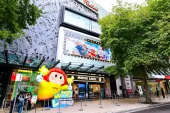


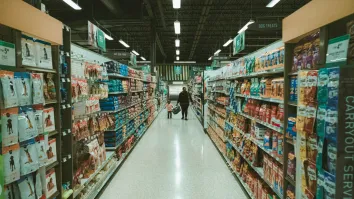
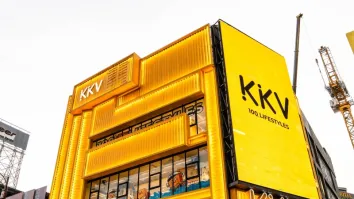



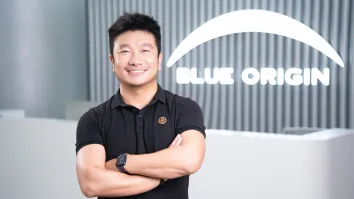



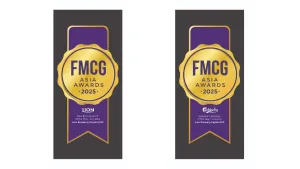






 Advertise
Advertise





